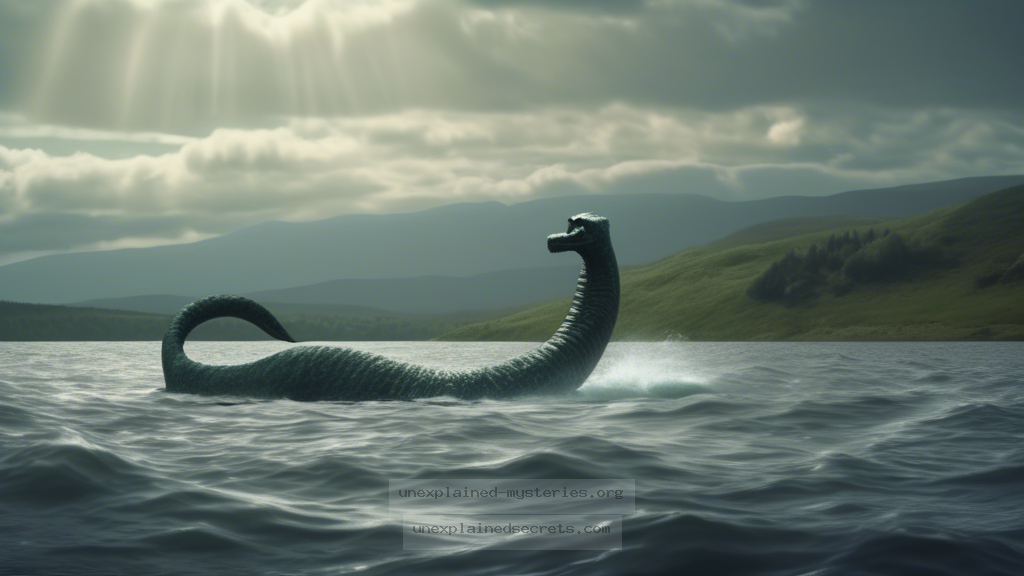What Do Recent Sonar Studies Reveal About the Loch Ness Monster’s Existence?
What Do Recent Sonar Studies Reveal About the Loch Ness Monster’s Existence?
The Loch Ness Monster, affectionately known as “Nessie,” has intrigued both skeptics and believers for decades, captivating imaginations with its rumored presence in Scotland’s most famous loch. The question of whether Nessie is a mere myth or a creature yet to be discovered has spurred countless investigations, including recent sonar studies that promise to shed light on this age-old mystery. This blog post delves into the latest sonar findings, historical context, and implications for cryptozoology, providing a comprehensive overview of the enigmatic creature that continues to elude definitive proof.
Historical Context of Loch Ness Monster Sightings
The legend of the Loch Ness Monster dates back to ancient times, with the earliest accounts appearing in the 6th century. A notable story from Saint Columba, who is said to have encountered a water beast while crossing the loch, serves as a cornerstone of Nessie lore. However, it wasn’t until the 1930s that public fascination peaked, particularly after the infamous “Surgeon’s Photograph” surfaced in 1934, purportedly showing the creature’s head and neck. This image, later revealed to be a hoax, ignited a surge of interest that continues to this day.
Over the years, numerous eyewitness accounts have emerged, describing an array of shapes and sizes. Some reported a long neck and hump, while others claimed to see large, flipper-like appendages. Despite these sightings, no conclusive evidence has been found, leading many to question the creature’s existence. With the advent of modern technology, including sonar imaging, the hunt for Nessie has taken on a new dimension.
Core Concepts and Theories Behind Sonar Studies
Sonar (Sound Navigation and Ranging) technology uses sound waves to detect objects underwater. Recent studies have employed advanced sonar systems, such as multi-beam sonar, which can provide detailed 3D maps of the loch’s bed and identify potential anomalies. This technology allows researchers to differentiate between natural formations, aquatic life, and possible unknown creatures.
One of the key theories surrounding the Loch Ness Monster is that it may be a surviving species of a prehistoric creature, such as a plesiosaur. This theory, while intriguing, has faced skepticism due to the lack of fossil evidence in the region. Sonar studies aim to either confirm or debunk this idea by identifying large, unexplained objects in the loch.
Recent Sonar Studies: Findings and Implications
In 2022, a team of researchers from the University of Otago in New Zealand collaborated with local Scottish scientists to conduct extensive sonar surveys of Loch Ness. Their results were groundbreaking, revealing several unidentified objects at various depths. These findings reignited interest and debate in the cryptozoology community, as they provided potential evidence for the existence of an unknown creature.
Among the notable discoveries were large, moving objects that exhibited behaviors inconsistent with common aquatic life. This raised fascinating questions: Could these be misidentified fish, or do they point toward Nessie’s existence? The team has stated that further study is necessary to draw any definitive conclusions.
Comparative Analysis: Sonar Studies vs. Eyewitness Accounts
While sonar studies provide tangible data, they are often contrasted with anecdotal eyewitness accounts. Below is a comparison of these two methodologies:
| Aspect | Sonar Studies | Eyewitness Accounts |
|---|---|---|
| Evidence Type | Quantitative data, visual maps | Anecdotal, qualitative descriptions |
| Reliability | Generally high, but dependent on technology | Varied, prone to human error and exaggeration |
| Interpretation | Objective analysis of data | Subjective interpretation of experiences |
This comparison highlights the strengths and weaknesses of both approaches, suggesting that a combination of technological and anecdotal evidence may be necessary to unravel the mystery of Loch Ness.
Alternative Perspectives: Skepticism and Debunking
Despite the captivating allure of Nessie, skepticism remains a significant aspect of the conversation. Many scientists argue that the Loch Ness Monster is a product of folklore, driven by misidentifications, hoaxes, and the human propensity for storytelling. They point to the lack of physical evidence and the numerous hoaxes, such as the Surgeon’s Photograph, which have plagued the legend.
Additionally, the biology of large aquatic creatures poses challenges. The ecosystem of Loch Ness, while rich, may not support a large predator like a plesiosaur or a similar creature due to limited food sources and the loch’s closed environment. Critics argue that the sonar findings, while intriguing, could easily be attributed to known species or underwater debris.
Common Misconceptions and Clarifications
There are several misconceptions about the Loch Ness Monster that deserve clarification:
- Misconception: All sonar findings are definitive proof of Nessie’s existence.
- Clarification: While sonar studies can reveal unidentified objects, they do not confirm the identity of those objects.
- Misconception: The Loch Ness Monster is a single entity.
- Clarification: The term “Nessie” may refer to multiple creatures or misidentified aquatic life.
- Misconception: All eyewitness accounts are credible.
- Clarification: Many accounts lack corroboration and may have been influenced by environmental factors or psychological phenomena.
Understanding these misconceptions is crucial for a more nuanced perspective on the ongoing debate surrounding Nessie.
Best Practices for Investigating the Loch Ness Monster
For those interested in investigating the Loch Ness Monster, whether as a hobby or a serious pursuit, consider the following best practices:
- Utilize Technology: Employ sonar and underwater cameras for more reliable data collection.
- Document Everything: Keep detailed logs of sightings, including time, weather conditions, and other relevant variables.
- Collaborate: Work with scientists and researchers to enhance credibility and share findings.
- Remain Open-Minded: Be prepared to challenge personal beliefs based on new evidence.
By adhering to these practices, enthusiasts can contribute meaningfully to the ongoing exploration of this enduring mystery.
Future Developments and Ongoing Research
The future of Loch Ness research is promising, with advancements in technology paving the way for more thorough investigations. Upcoming projects include a comprehensive survey using high-resolution sonar imaging and underwater drones, which aim to gather unprecedented data about the loch’s ecosystem.
Moreover, collaborative efforts between universities and cryptozoology organizations may yield new insights into historical sightings and the lore surrounding Nessie. As public interest remains high, funding for research is likely to increase, potentially leading to significant discoveries.
Conclusion: The Enigma of the Loch Ness Monster Endures
The question of whether the Loch Ness Monster exists remains a captivating enigma, fueled by recent sonar studies and historical accounts. While the evidence collected thus far is intriguing, it is crucial to approach the findings with a balanced perspective. The combination of advanced technology and anecdotal narratives offers a unique lens through which to examine this mystery, highlighting the potential for both scientific discovery and the enduring power of folklore.
As researchers continue to explore Loch Ness, the possibility of uncovering the truth behind Nessie remains tantalizingly close yet frustratingly elusive. Whether a creature dwells in its depths or if the Loch Ness Monster will forever remain a myth is a question that may, one day, finally be answered. Until then, the legend continues to inspire curiosity and wonder in hearts and minds around the world. 💡
Other Articles
Recent Posts
- What Happened to Flight MH370? The Conspiracy Theories That Still Haunt Us
- What Secrets Lurk Within the Walls of the Infamous Trans-Allegheny Lunatic Asylum?
- What Evidence Supports the Existence of Bigfoot in the Pacific Northwest?
- What Happened to the Indus Valley Civilization? Unraveling the Mysteries of Ancient Urban Life
- Can Telepathy Be Scientifically Proven Through Laboratory Evidence?







